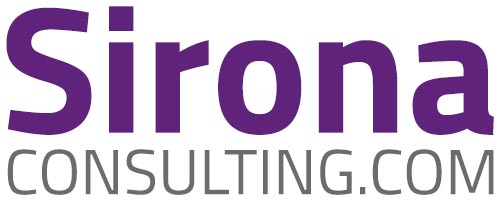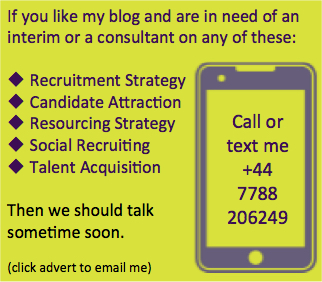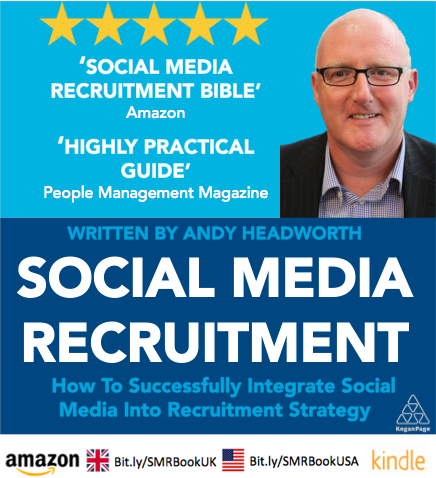Twitter Is No Longer Optional For Recruiters And HR
There is a social media platform that every recruiter should be using - but they don’t, and I have no idea why. It is mainstream, super easy to use and is as mobile friendly as social networks go. I am of course talking about the little blue bird, Twitter.
I have been a huge fan of Twitter for years, and it is always my go-to social network when I pick up my iPhone. From a recruitment standpoint, I just don’t get why recruiters wouldn’t want to take the time to use it as a part of their normal recruiting life. It has so many attributes that recruiters should be taking advantage of:
- Candidate and client sourcing - based on bio data AND what they tweet about
- Branding - marketing and establishing your reputation in your sector/industry
- Communication - a superb way of engaging with people easily in real time
- Private messaging - latest add-on is ability to direct message (privately) people you are not following
- Tracking - competitor information, target candidates and hashtags can v be easily tracked
- Real-time news - stay current in your industry in real-time
- Monitoring - easily check what people are saying about you and your brand/company on Twitter
- Easily engage people - whether it is a hashtag, event or Twitter Chat, easy to join in conversation
It is an absolute no-brainer, right? Other industries are coming to the same conclusions as well.
I have highlighted the reason in the second paragraph above why I believe that recruiters shy away from Twitter - it takes time, persistence and patience to grow a meaningful following on Twitter, and too many recruiters (by nature of their job) focus on the short-term need not long-term vision. As it becomes harder and harder to find candidates across many sectors, I believe recruiters have no option than to look deeper into a social network that is a goldmine of potential candidates for them.
If you are on Twitter currently, you can follow me here.
So by way of demonstrating what I mean, and to help you get improve your Twitter experience, here are 9 steps you as a recruiter or HR person can take, to start using Twitter more effectively for recruiting:
1. Get the Twitter basics right.
Make sure you complete the bio fully - good headshot picture (use your LinkedIn bio pic for personal brand consistency - if it is a good one), and a complete 160 character bio telling people what you do. Include a few keywords, maybe a hashtag and make sure you add a link to the landing page you want people to visit (blog, website, career page, LinkedIn profile, etc ). Resist the urge to ‘cool and edgy’ as you are trying to appeal to a wide audience and you don’t want give people the wrong impression.
2. Know your target audience.
One of my passions - you absolutely need to know who your target candidate audience is. On Twitter this is even more important, as people don’t necessarily put their full job titles (if at all) in their bio’s, so knowing other keywords, descriptions, and maybe even relevant hashtags will help target your activities. When you think you have it right, do some searching to find out. An easy tool to start with is Followerwonk, which searches Twitter bios easily.
Also try the new search within Twitter itself (remembering to click on the Accounts tab):
You can also use this easy to follow search tips on this graphic to search Twitter:
3. Know your #hashtags
Social media is now synonymous with hashtags and Twitter is no exception. They are a fantastic way of finding both a target audience and where they are. For example a superb candidate resource for recruiters are conferences, exhibitions, events and specific conversations on Twitter - as all of them now will have its own unique hashtag associated to it. If people are using the hashtag they are either attending the event, talking about it or at the least interested in the subject. They should be worth following and engaging with at some stage - especially if it is in your target industry.
There are many ways to search for relevant hashtags and find the most relevant ones - some of the tools I would use are:
https://hashtagify.me/
https://tagboard.com/
https://tweetreach.com/
https://www.hashtracking.com/
Also, find all the upcoming events in your industry and check out their twitter feeds - they will have unique hashtags. Create a column on Hootsuite, Falcon or Tweetdeck for this hashtag, and you can then monitor all the conversation and the people at the event.
4. Twitter Lists are candidate goldmines
A hugely underused aspect of Twitter, these are user generated lists of people that can be both public or private. Other Twitter users have taken the time to compile lists of people across every job, skill, interest you could image - and they are superb for recruiting purposes. Twitter and Google are now friends again, and as a result you can now use the power of Google search to find the twitter lists you want to find.
A simple x-ray is all you need to get started:
site:twitter.com inurl:lists <insert search term> as an example this is one for project managers in London:
I clicked on the 2nd link and I found a Twitter List with over 1400 Project Managers in London. Bingo! You will notice that the creator of the list has included people that have not got Project Manager in their bio in - they have established that they are a Project Manager from other ways. This is hugely valuable as it can save you hours and hours of searching.
5. Building your following
I have now shown you how to find many potential people on Twitter - next you need to start building your following with them. Before you start blindly following people on a new Twitter profile, please consider what happens when you click Follow on Twitter on someone’s bio - they get notified of your Follow and they get a link to your bio and Twitter stream. You need to make it interesting and attractive enough for that person to take one look at follow you back. That is, after all what you are trying to do here - grow your following.
I have covered it on several previous posts about sharing content and what content should you share, so I won’t recover old ground, other than to say don’t just talk about yourselves when you post tweets.
As you follow people, a proportion of them will follow you back - the more relevant and interesting bio and tweets stream you have then the more that will do this. Two tools to help you manage this growth are:
https://manageflitter.com/
https://www.socialbro.com/
They will help you control your following/follower numbers. What I mean by this is that you should aim to have steady and consistent growth on your account, including removing people that haven;t followed you back every few weeks. If you don’t do that then you will have a disproportionate ratio of Following:Followers which can give people the impression of desperation or spamming. I always encourage people to get to the point where they have more Followers than people they are Following, such as mine here:
This is the part of Twitter that requires some patience. You are not going to grow a large following overnight, and you have to have a strategy to do this consistently over a period of months. But while size of following is important, having a targeted following is more important. Resist the urge to buy followers, and keep focused on your target audiences. For example I focus on following people in HR, Talent and Recruitment, and I rarely move away from that.
6. Twitter Chats
Twitter Chats known at #tchat on Twitter are a fantastic way to build and engage with a specific audience, around a specific subject or topic. They usually last for an hour and are all conducted on Twitter. To start with I would recommend you watch and participate in one (here is a huge list of Twitter chats) before you decide to host your very own #tchat. When you are ready first read this great post on a step to step guide on getting started with a Twitter chat.
7. Managing Twitter effectively
There are many social media dashboards that will help you manage Twitter (as well as other social networks). Three of the main ones are Hootsuite, Tweetdeck and Falcon Social. My favourite is Hootsuite, and it is because it is so easy to use and manage - and it has a superb mobile app as well. You can use these tools to do all your content posting, competitor tracking, monitoring, event hashtag tracking, searching, scheduled content posting, Twitter List watching as well as all your normal Twitter engagement and activity. It can seem a little daunting at first, but this is a seriously great tool to use. For more information on Hootsuite, they have a great site to help.
8. How to build relationships on social media
This is the biggest challenge for many recruiters, which I believe comes down to time again. This is not something that can happen over night and requires you to build trust with your target audience. There is a superb presentation by Kara Yarnot on Slideshare that covers this - a couple of her images are below:
This is so true - what you should and shouldn’t do on social media:
9. Posting jobs
You will notice I have left this until the end of the post. I have no problem with jobs being posted on Twitter - especially if it is a dedicated jobs feed account. But endlessly posting jobs through an individual recruiters account does not deliver much value or interest to potential followers. This is the big mistake I see recruiters making - just posting jobs on their account. There needs to be an audience on these accounts for people to actually see the jobs posted, and endlessly posting poorly written jobs via your ATS, job posting tool or job board, is not going to interest or excite that many people.
If you have taken the time to build an engaged audience who want to see jobs then that is a little different, and a great example is the Boots jobs Twitter feed.
I re-iterate what I started this post with - Twitter is a brilliant social network for recruiters to use, as long as it is given due care and attention. It is not a quick fix solution, you need to cultivate it with great content, make it interesting and above all keep it relevant to your target audience.
And of course if you are on Twitter and enjoyed this post, follow me here for more great content
If you have enjoyed this post and found it useful then you check out my new book - Social Media Recruitment . It is a practical ‘how to’ guide for everything to do social recruiting. One of the chapters is dedicated to the myriad of social networks and social media tools that you can use to make it easier for you to use social media effectively for recruitment. It has already become a N0.1 Best Seller in a short space of time, with many HR and recruiting professionals around the world finding it invaluable. You can get it on Amazon UK here and Amazon US here or your own Amazon country site.












Pingback: Top 10 Twitter Tips for Newbies (Infographic)()
Pingback: Twitter Is No Longer Optional For Recruiters An...()
Pingback: 37 best articles from 2015 on recruiting programmers()